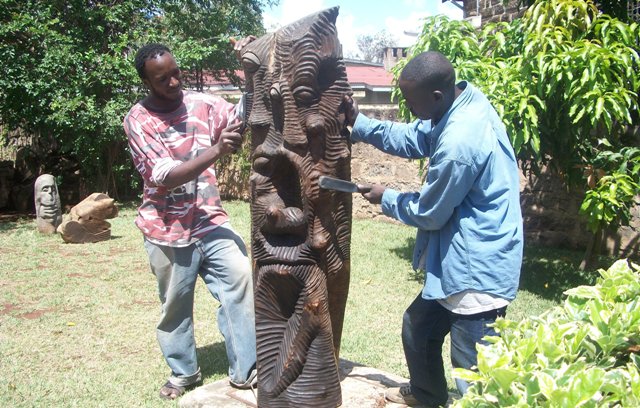By Irene Gaitirira
Published June 30, 2016
 If you wanted to transport a 900-kilogramme rhino some 6500 kilometres across continents, how would you go about it?
If you wanted to transport a 900-kilogramme rhino some 6500 kilometres across continents, how would you go about it?
Impossible; did you say?
RELATED:UN Declares Kenya and Tanzania as the World’s Worst Elephant Slaughter Houses
A courier service provider has just delivered a 900-kilogramme European-born rhino in East Africa; that is a 6500-kilometre distance.
How was the fete accomplished?
“To ensure maximum comfort and minimal travel time”, DHL, the delivery provider, says it used its own “dedicated Boeing 757-200 freighter.”

DHL says Eliska, the female black rhino, “was transferred from ZOO Dvur Kralove in the Czech Republic, where she was born in 2012, to the main DHL European Hub in Leipzig in Germany. She was then loaded onto a dedicated 28-tonne Boeing 757-200 freighter, specially modified for animal transport, and flown more than 6500 kilometres directly to Kilimanjaro Airport in Tanzania, from where she was transferred by truck to her new home. Along the way, she was accompanied and monitored by a team of support staff, including Dr Pete Morkel, one of the world’s leading black rhino veterinarians. Five containers of food and water supplies were also loaded for the journey.”
RELATED:Nairobi Museum to Showcase Art and Conservation
 And so Eliska was moved from its place of birth “to a natural park in Tanzania as part of an ongoing conservation project run by the George Adamson Wildlife Preservation Trust, aimed at helping endangered animal populations to grow and prosper in their natural habitat.”
And so Eliska was moved from its place of birth “to a natural park in Tanzania as part of an ongoing conservation project run by the George Adamson Wildlife Preservation Trust, aimed at helping endangered animal populations to grow and prosper in their natural habitat.”
Ken Allen, CEO of DHL Express, says, “The delivery of Eliska to Tanzania continues a proud tradition at DHL Express of supporting international animal conservation efforts. We were very excited to have the opportunity to transport this beautiful animal home to Africa and to play our part in these critical efforts to help revive endangered Eastern black rhino populations. Complex projects like this, where failure is simply not an option, also allow us to showcase the power of the DHL global network and the expertise of our certified international specialists.”
DHL says “Eliska’s move was overseen by an international DHL team, comprising around 40 specialists in areas ranging from ground transportation and aviation to customs clearance and certification across more than five countries.”
RELATED:Art to the Rescue of East African Elephants and Rhinos
Tony Fitzjohn OBE, Field Director, The George Adamson Wildlife Preservation Trust, says, “Having the support of an experienced team of international transport specialists allowed us to focus without any distraction on the comfort and well-being of Eliska and to ensure that she had the best possible introduction to her new life in Africa.”
 Eastern black rhinos are one of the most endangered mammal groups.There are estimated to be about 800 in the world today.
Eastern black rhinos are one of the most endangered mammal groups.There are estimated to be about 800 in the world today.
Premysl Rabas, Statutory Director of ZOO Dvur Kralove where Eliska was born, says, “Eliska’s departure is a bitter-sweet moment for ZOO Dvur Kralove. We are sorry to say goodbye to one of our much-loved animals, but at the same time, we are extremely gratified to have played a part in this important conservation project and excited to see how she adapts to her natural habitat. The build-up to her move to Tanzania has involved years of careful preparation.”
RELATED:Forest Conservation Efforts in Uganda Threaten Traditional Music and Crafts
DHL says it “has supported a number of major conservation projects in recent years, including the delivery of three black rhinos from the UK to Tanzania in 2012 and the delivery of two rare Sumatran tigers from Australia and the USA to London Zoo in the same year as part of a breeding program. A 2013 project to transfer two giant pandas from China to a Belgian sanctuary resulted in the perfect delivery in June 2016, when the female gave birth to a panda cub.”




